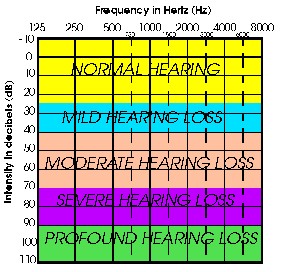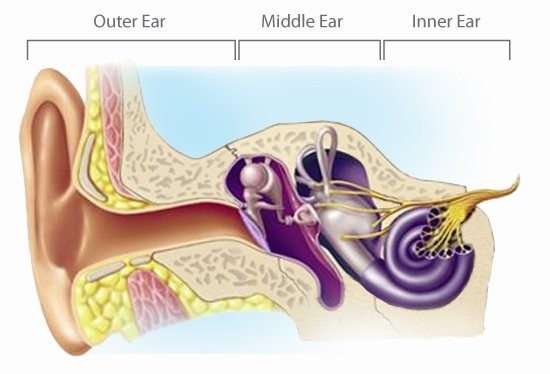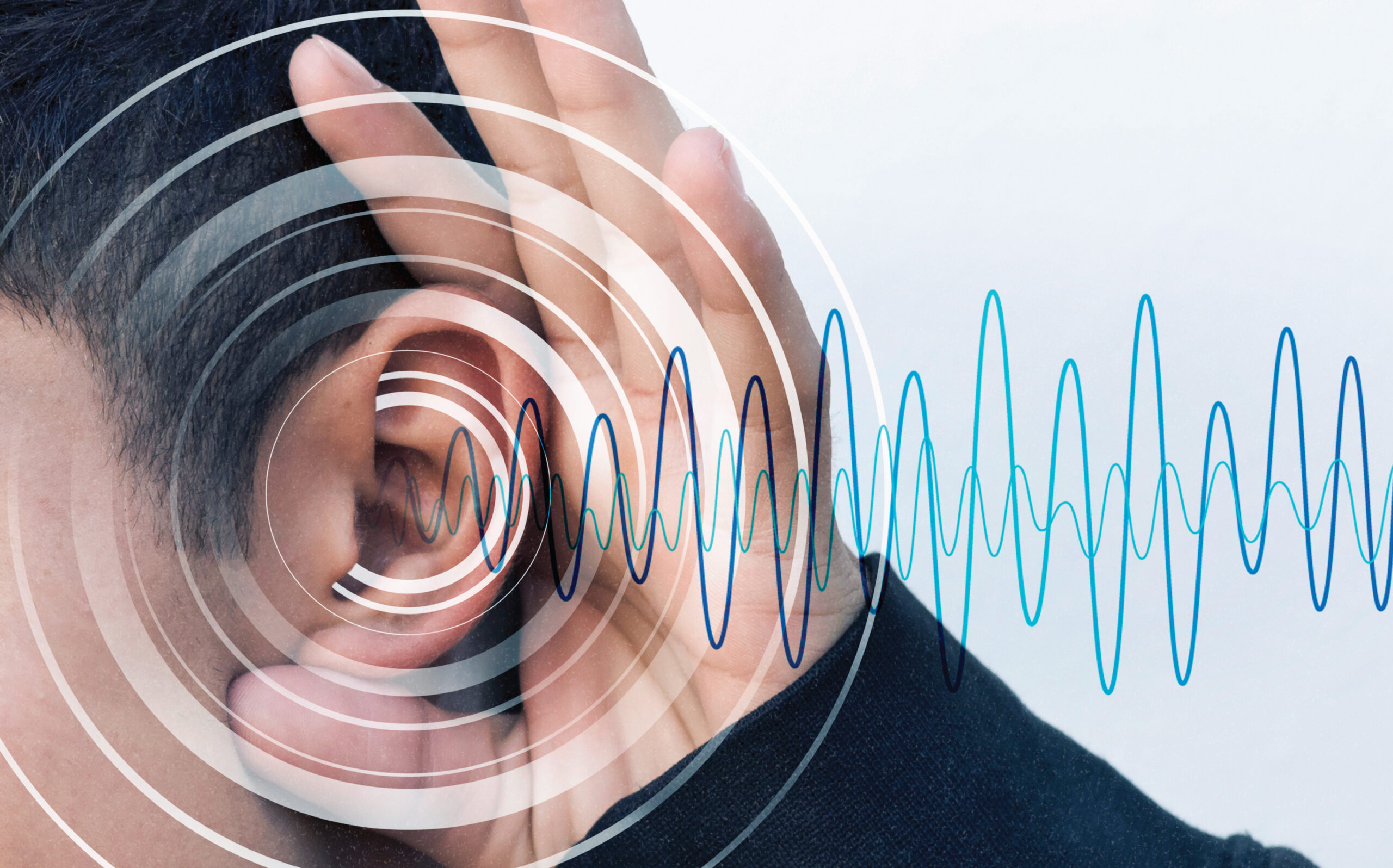What is hearing loss and how is it measured?
- Hearing loss occurs when someone’s ability to hear is diminished compared to normal hearing. Humans have the ability to detect sounds in the frequency range between 20Hz to 20kHz. Sound loudness, on the other hand, is measured in decibels (dB).
- Normal hearing is defined as having a hearing threshold of 25dB or better, and some degree of hearing loss is said to occur above this threshold.
What are the different degrees of hearing loss?
Hearing loss can be classified into five degrees based on the severity:
- Mild: Ranging from 26 to 40dB.
- Moderate: Between 41 to 55dB.
- Moderately Severe: From 56 to 70dB.
- Severe: 71 to 90dB.
- Profound: Above 91dB.
Deafness is typically referred to as profound or total hearing loss.

How does our ear function and what types of hearing loss can occur?
Our ear is divided into three parts: the outer, middle, and inner ear. The outer and middle ears work together to conduct and amplify sound, while the inner ear converts sound energy into electrical impulses for the brain.
Hearing loss can arise from two main types:
- Conductive hearing loss: This occurs when there’s a disruption in sound conduction due to problems in the outer and middle ear.
- Sensorineural hearing loss: It results from issues in the inner ear, affecting the conversion of sound energy into electrical impulses.
In some cases, a combination of both types can lead to mixed hearing loss.

How does hearing loss present in children and how does it affect adults?
- In children, hearing loss may lead to speech delay or learning disabilities. It can be caused by various factors, including prematurity, certain syndromes with craniofacial anomalies, meningitis, and hyperbilirubinemia (jaundice).
- In adults, hearing loss can have significant consequences, such as difficulties in communication, inappropriate loudness of speech, reduced self-confidence, social withdrawal, depression, and even tinnitus (ringing in the ear).
Why is early detection and treatment of hearing loss important in children?
Early detection and treatment are crucial, especially for children, as speech and language development are most critical in the first two years of life. Early intervention can greatly improve the chances of normal development, particularly for children with deafness in both ears.
Could hearing loss be a symptom of a more serious health condition?
Yes, hearing loss could be a symptom of a more serious underlying health condition like nasopharyngeal carcinoma or sinusitis. For example, a persistent ear block sensation could be an early symptom of nasopharyngeal carcinoma.
How is hearing loss diagnosed and treated?
- Hearing loss is diagnosed using a pure tone audiogram for adults and a BSER (Brainstem Evoked Response) test for younger children. Treatment depends on the cause. For example, clearing of impacted ear wax can resolve conductive hearing loss.
- Sensorineural-type hearing loss might require the use of a hearing aid. In the case of a child with profound hearing loss in both ears, a cochlear implant might be crucial for the best outcome.
What are some non-medical treatments and preventive measures for hearing loss?
Non-medical treatment of hearing loss aims at prevention and slowing its progress. Individuals should practice good ear care such as avoiding prolonged exposure to loud noises that can damage the inner ear’s hair cells. Using earplugs in noisy work environments can help, and consuming certain vitamin supplements might slow nerve degeneration.
Understanding hearing loss and its implications are essential for fostering a more inclusive and compassionate society. From the delicate mechanisms of our ears to the profound impact on speech, language development, and emotional well-being, hearing loss warrants our attention and care.
By advocating for early detection, prompt intervention, and tailored treatments, we can empower individuals of all ages to embrace the symphony of life and experience its rich tapestry of sounds.
Let us cherish the gift of hearing and work together to create a world where everyone can fully participate in the harmonious dance of communication and connection, regardless of their hearing abilities. With continued research, awareness, and support, we can ensure that the notes of hearing loss are transformed into a song of resilience, acceptance, and boundless possibilities.
For more information on Sri Kota Specialist Medical Centre (SKSMC) and the treatment options available, kindly visit: https://www.srikotamedical.com/
by Dr Johnson Ng Wei Siang, Consultant ENT/Head and Neck Surgeon.

